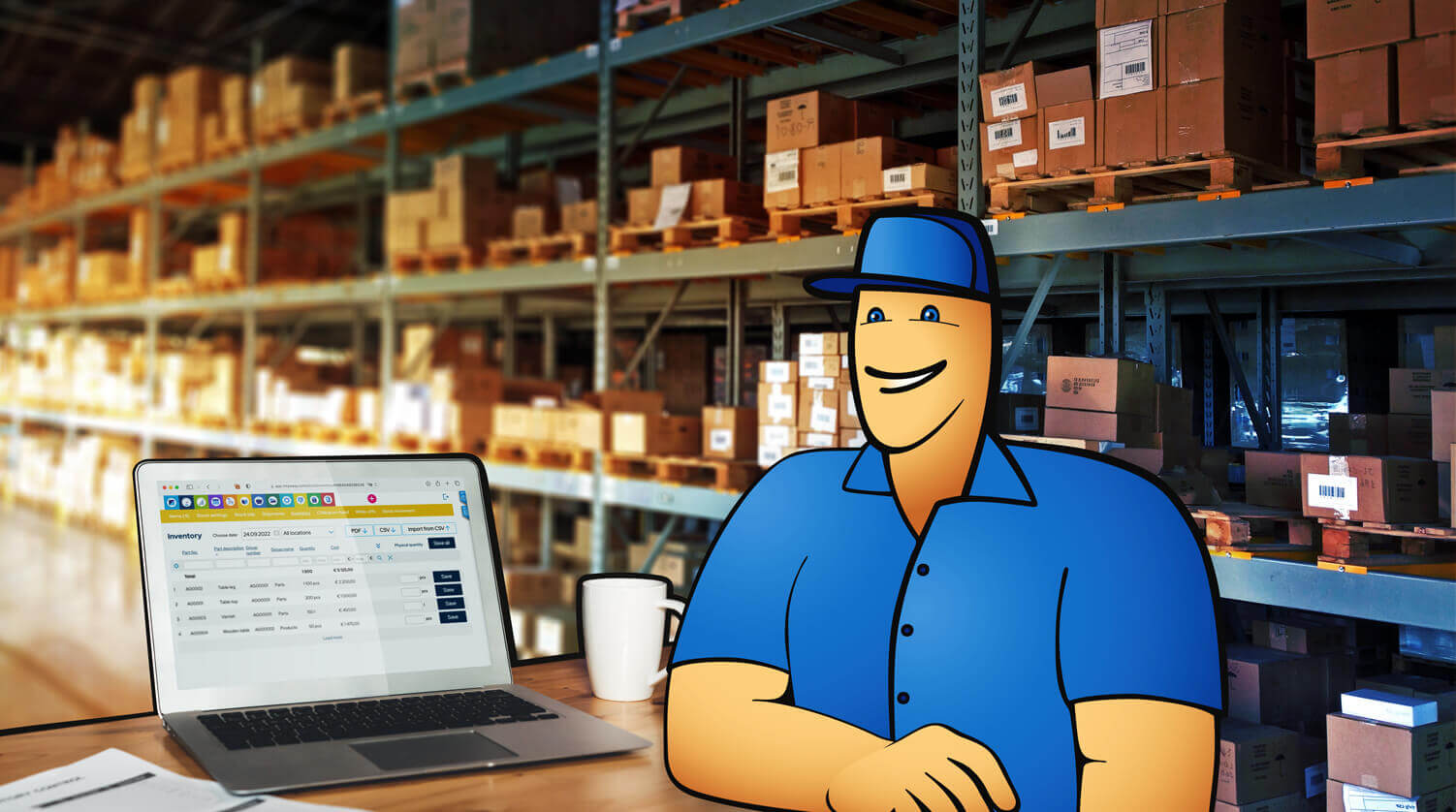What is D2C and How to Sell Direct-to-Consumer?
The D2C business model is coming back fast. Learn why and how to start implementing Direct-to-Consumer in your manufacturing business.

You can also listen to this article:
What is D2C?
Even though the term D2C (or Direct-to-Consumer) is quite modern, the basic business model it refers to goes back to the very beginnings of commerce when the first craftsmen traded their products (such as tools, spearheads, etc.) to other tribesmen in exchange for food. From then on, the D2C model has pervaded throughout human history, be it in the case of small rural communities where farmers traded their crops directly to their neighbors, or in early modern cities where artisans sold their goods directly to the people that needed them.
That is basically what D2C or Direct-to-Consumer is – making a product and then selling it straight to the consumer, without using the help of third-party retailers or other middlemen. That is also how the D2C model goes further from B2C (business to consumer) – it cuts the middleman out.
The Direct-to-Consumer model was severely disrupted by the development of faster modes of transport and by the advent of mass production, which ushered in the era of department shops, supermarkets, and global brands that came to dominate the world of commerce as we know it.
Although the emergence of the Internet democratized the marketplace thanks to providing many new and affordable solutions for setting up a business and advertising it, the model of manufacturers selling to retailers selling to consumers remained largely unmoved.
The first serious web-based D2C businesses had a decade or so of undisturbed booming business, but nowadays the Internet marketplace is highly competitive in almost every sector as the global economy and infrastructure have brought the world’s manufacturers to contend in the same arena.
5 simple reasons for going D2C
Even though the competition is fierce, D2C is seen as a viable business model by an increasing number of companies. Here are the reasons you should think about using D2C at least as a supplement to your regular sales channels:
1. More sales and higher margins
With the plethora of information available, consumers in today’s world are getting smarter by the minute. You can see an advertisement for a product that you like, and then most likely find tens of companies that have it on offer with a few clicks. After that, it is easy to pick out the company that boasts the best balance of price, quality, and lead time.
This trend is giving manufacturers a clear advantage over retailers: thanks to cutting out the middleman, manufacturers can offer their products to customers at a reduced price with a reduced lead time compared to distributors and retailers. Giving the customers a more affordable product faster will boost sales. And you can bolster up your margins by adjusting your prices – because you are not going to sell D2C with the same prices you sell to retailers. The prices in your D2C channels can be substantially lower than what retailers use, and still substantially higher than what you usually offer to retailers.
2. More exposure in the marketplace
While true that becoming a known brand online is a long and arduous journey, it is easy to start being in the picture. Even if you do not have a lot of budget for marketing activities, you can easily and affordably open a store in an e-commerce platform, create promotional materials, and use highly targeted ads in social media and search engines in order to reel in clients. This way, you will be exposed to a huge amount of potential customers that would not have heard about you through your regular sales channels.
3. Control over the whole process
When you go D2C, you will get to control a longer portion of the supply chain. You will be free from the constraints retailers often put on manufacturers – either by demanding low prices that stretch your margins thin or by narrowing your product line by only purchasing a few articles in your catalog. When you sell D2C, you will decide what to put onto the market, how to advertise your goods, and not depend on the whims of retailing partners. Not to mention the fact that physical retail has suffered greatly with today’s social distancing measures (it is far from being dead, though).

4. Direct contact with consumers
Having a direct line with your target audience is invaluable. Apart from getting better feedback about your products, D2C also helps companies to collect other data about their customers’ behavior that could help you narrow down your target audience, reach it in a much more efficient way, and predict or understand changes occurring in the market. Direct contact also implies more personal engagement with your customers, which in turn creates brand loyalty and gives you the opportunity to create more meaningful customer experiences.
5. Empower Small Business
Giant corporations put a lot of effort into trying to make it look like they care about small businesses and local communities. But the reality is not so rosy. Many small businesses start with the dream of being their own boss, only finding themselves being totally dependent on larger enterprises at the end. With each small business that decides to go D2C, however, the market share of the giants gets a bit smaller, and the power of small business grows. It is the classic David vs. Goliath scenario – and guess who wins at the end.
These five aspects of Direct-to-Consumer are why Forbes names the reinvention of D2C as the first reason why US manufacturing is on the rise. Because thanks to more of the profits landing into the pockets of manufacturers, they can invest more into their businesses.
What are the best D2C channels?
Online D2C channels
The easiest way to bring D2C into your business these days is to start selling online. There are different ways to do so, but the most popular options are:
- Selling on Amazon, Alibaba, Etsy, or other websites designated for e-commerce.
- Using an e-commerce platform like Shopify, WooCommerce, etc. to build a shop on your own website.
- Developing an e-store on your site from scratch.
Even though e-commerce sites and platforms make it very easy to open up a shop with great design and user experience, many businesses still opt for hiring a web developer to build an e-store from zero. This method is more expensive initially but could prove to save a lot of money in the long run due to many e-commerce platforms charging a monthly subscription fee or a transaction fee on each sale. So in the case of these popular solution providers, the more successful you become, the more you pay for using the platform.
However, if comfort and speed weigh up the charges of third-party service providers in your list of priorities, some of the best e-commerce platforms for starting your D2C business are Shopify, WooCommerce, BigCommerce, and Magento.
All of these solutions also integrate with manufacturing and inventory management solutions such as MRPeasy. This allows you to seamlessly track your orders, stock, and production without having to enter data into different systems in parallel.
Also read about Shopify Inventory Management for Manufacturers and Resellers.
Physical D2C channels
Even though the term D2C is almost exclusively used in the context of e-commerce, the business model can also include manufacturer-owned retail channels in the physical world, such as boutiques, factory shops, fair booths, even bars, and restaurants. These physical locations could be used to exhibit your products and raise awareness about your brand, thereby propping up your online business.
For example, a brewery might want to open up a pop-up bar.
A garment manufacturer or a jeweler could open a small boutique.
A coffee-roaster could open up a café.
A custom computer manufacturer could start an e-gaming lounge.
A cosmetics manufacturer could open a beauty salon.
And so forth. Being physically present in the locations that your target audience frequents can help bring more attention to your brand, give consumers a taste of your products, and increase sales on your web platforms as a consequence.

How to Market D2C?
One of the biggest obstacles companies face when they decide to go for the D2C model, is reaching their target audience. Historically, manufacturers have been rather conservative in their marketing efforts compared to other sectors. But taking a step forward is better done sooner than later. You cannot just open a store online and wait for the customers to flock in.
There are a number of marketing channels that D2C companies with smaller marketing budgets can successfully utilize in order to bring customers to shop in their store.
1. Social Media Marketing
Not being on social media today is almost like living “off the grid”. As almost everyone is using at least one social media platform, be it Facebook, Instagram, YouTube, TikTok, Reddit, or others, it is one of the best ways to target your audience and communicate with them.
The most important is to establish your company story, think about what kind of content would interest your potential customers, and then produce and post it consistently. Dig deep to understand what makes your brand stand out among others and do not be afraid to experiment with different approaches – trials and errors inevitably lead to success.
For quicker results, most social media sites also offer paid advertisements that allow you to target people by location, age, gender, specific interests, etc.
2. Search Engine Marketing
Another channel that is becoming more and more prominent is Search Engine Optimization or SEO. The central premise of this is to create content that the algorithm of any given search engine (e.g. Google or Bing) would deem worthy to show among the first results of a search. Although back in the day this was achieved by cramming popular keywords related to your business onto your website, today it is done by writing excellent copy about topics that your customers care about.
The trick is to find out what keywords your target audience is using when searching for either a product like yours or information related to the field you are active in. For example, an ice cream company could conduct a survey and then create a blog post about the top 10 best ice cream flavors, or a piece about the history of ice cream.
SEO is a very intricate and highly analytical marketing channel, however, and takes a lot of time to master – and a lot of time to take effect. Search engines do, however, also offer paid marketing options to have your company website come up first when people are searching for specific keywords.
3. E-mail Marketing
E-mail is a great way to stay in touch with your audience and provide them with information about new products, special offers, etc. The European GDPR law specifies that people have to give their consent for their private data such as e-mail addresses to be used for marketing purposes, but you can grow your contact list in this framework by offering customers something in return for them giving you permission to use their e-mail address. For example, you can offer a 5% discount coupon with each subscription to your newsletter, or just the opportunity to know about special offers before others.
Then, provide your contact list with what you promised them, be it industry know-how, information about special offers or new products, and invite them back to your website to learn (and buy) more.
Key takeaways
- D2C or Direct-to-Consumer is a business model that companies use to sell their products directly to the end-consumers, cutting out the middlemen such as third-party distributors and retailers.
- D2C could be beneficial for a company by improving cash flow, increasing margins, giving them more control over the whole supply chain, reaching more customers, and communicating with them directly, acquiring lots of important data in the process that could help improve their products, service, marketing, and other processes.
- The term “D2C” is mostly used to refer to companies selling online using e-commerce platforms such as Amazon or Shopify, or developing their own store from scratch on their website. D2C can be also used in physical retail contexts, in the case when a company opens up physical locations where they offer their products, such as pop-up stores, bars, or even fair booths.
- Instead of sales calls to distributors and retailers, the D2C model relies heavily on digital marketing channels such as social media, search engines, and e-mail.
You may also like: Types of Manufacturing Processes – A Comprehensive Guide.




